

23 17 31 35 CHRO CORNER Exclusive Interview with Veena Satish, VP of People and Culture, MoEngage Strategies To Keep Your Most Valuable Assets Intact - Vijayaraj Palaniraj, Equiniti India The Tech Layoffs Of 2022 And 2023: Unveiling The Realities - Rounak Malhotra, Great Lakes Institute of Management Moonlighting In The Indian IT Industry: The Good, The Bad, And The Ugly - Harshal Goyal, NLB Services MAY 2023 • Vol.5 • No. 05 (ISSN 2564-2049) TALENT INTELLIGENCE PLATFORMS: THE NEXT BIG THING IN HR TECH - Vijay Bankar, HR Generalist
On the Cover
Talent Intelligence
Platforms: The Next Big Thing In HR Tech
Understanding the role of talent intelligence platforms in HR tech

- Dr. Vijay Bankar, HR Generalist
Articles
13 The High Cost Of Replacing Top Talent
Calculating the true financial impact of employee attrition
- Bhavani Arunchalam, Ph.D., Business Administration, Annamalai University.
21 The Future Of Remote Work In India In 2023
Embracing HR tech for efficient remote work
- Ravinder Goyal, Co-Founder and Managing Director, Erekrut HR Automation Solutions
28 AI-Based Employee Onboarding: Impact On Productivity
Transforming onboarding with AI and automation

- Amit D. Mishra, CEO and Founder, iMocha
33 The Role Of Empathetic Leaders In Remote And Multicultural Environments
Workplaces thrive with empathetic leaders
- Arun Kabra, CFO, TimesPro
37 Women In STEM: Who Developed The Industry To What It Is Now
Highlighting female pioneers and role models
- Oasys
08
HCM Excellence (APAC & Middle East) MAY 2023 Vol.05 No.05 (ISSN 2564-2049)
INDEX
TOP PICKS
CHRO CORNER
Exclusive Interview with Veena Satish, VP of People and Culture, MoEngage
Moonlighting In The Indian IT Industry: The Good, The Bad, And The Ugly

Navigating the thin line of moonlighting ethics in India
- Harshal Goyal, VP, Total Talent Solutions - Staffing, RPO & Perm, NLB Services.
Strategies To Keep Your Most Valuable Assets Intact

A guide for businesses in developing countries during a shaky economy
-
Vijayaraj
Palaniraj, Senior Manager, Talent Acquisition, Equiniti India
17 23 31 35
The Tech Layoffs Of 2022 And 2023: Unveiling The Realities

Examining the impact, reasons, and a potential recession in the tech industry
- Rounak Malhotra, Academic Associate, Great Lakes Institute of Management

INDEX
How are our HCM Products and Services helping to make you smarter?
HCM Excellence (APAC & Middle East) - Bi-monthly Interactive Learning Journal


Stay up to date on labor laws and compliant on HCM regulations in the Asia Pacific (APAC) and Middle East regions. This bimonthly publication offers relevant topics that help educate and inform readers on the latest HR developments, regulations, or practices in these areas that may affect your business.
Human Capital Management Webcasts for Certification Credit

HR.com offers various informative webcasts on a variety of topics around human capital management. Webcasts are available live online with a downloadable podcast and a copy of the slides (PDF) available before and after each webcast. Earn all of the required recertification credits for aPHR, PHR, SPHR, GPHR, and SHRM Certifications. HR.com’s one-hour webcasts, excluding demo webcasts, in every HR specialty are pre-approved for HRCI and SHRM credit.

HR Community Networking
Join our community members with a similar interest in your specialty of HR. Share content and download research reports, blogs, and articles, network, and “follow” peers and have them “follow” you in a social network platform to communicate regularly and stay on top of the latest updates. These well-established communities are an invaluable resource for any HR professional or manager.
Use these invaluable HCM Excellence (APAC & Middle East) resources today! For more information phone: 1.877.472.6648 | email: sales@hr.com | www.hr.com
Driving and inspiring HR Excellence in the Asia Pacific and the Middle East regions.
Editorial Purpose
Our mission is to promote personal and professional development based on constructive values, sound ethics, and timeless principles.
Excellence Publications
Debbie McGrath

CEO, HR.com - Publisher
Sue Kelley Director (Product, Marketing, and Research)
Babitha Balakrishnan and Deepa Damodaran Excellence Publications Managers and Editors
HCM Excellence (APAC & Middle East) Team
Babitha Balakrishnan and Deepa Damodaran
Koushik Bharadhwaj Editors
Chinnavel & Nataraj Satish Design and Layout (Digital Magazine)
Chandra Shekar and Vibha Kini Magazine (Online Version)
Submissions
& Correspondence
Please send any correspondence, articles, letters to the editor, and requests to reprint, republish, or excerpt articles to ePubEditors@hr.com
For customer service, or information on products and services, call 1-877-472-6648
For Advertising Opportunities, email: sales@hr.com
Debbie Mcgrath Publisher, HR.com
Babitha Balakrishnan | Deepa Damodaran Editors, HCM Excellence (APAC & Middle East)


Navigating the Future of HR: Opportunities and Challenges in a Post-Pandemic Era
The Covid-19 pandemic has significantly impacted economies and industries worldwide, and the effects continue to be felt as we transition into a post-pandemic era. One critical aspect that businesses must grapple with is talent retention. The disruptions caused by the pandemic have led to increased resignations and a growing trend of moonlighting, where employees take on secondary jobs to supplement their income. In 2023, the future of human resources (HR) holds immense importance in navigating these challenges and ensuring the long-term success of organizations.
Looking ahead to 2023, the future of HR holds promising opportunities and challenges. HR professionals will play a crucial role in reshaping the workforce and adapting to the new normal. Technology, especially AI-driven solutions, will continue to transform the HR landscape. Talent intelligence platforms, for instance, empower HR professionals to make data-driven decisions, enhance recruitment strategies, and plan for future workforce needs. These platforms combine internal and external people data with technology, insights, and intelligence to drive business decisions, ultimately leading to improved talent strategies and better business outcomes.
HCM Excellence (APAC & Middle East) Excellence (ISSN 2564-2049)
Moreover, the post-pandemic era calls for HR professionals to focus on employee well-being and engagement. The disruptions caused by remote work and the uncertainty of the pandemic have taken a toll on employee morale and mental health. HR departments must prioritize creating a positive work culture that fosters a sense of belonging, provides support, and promotes work-life balance.
© 2023 HR.com. No part of this publication may be reproduced or transmitted in any form without written permission from the publisher. Quotations must be credited.
Copyright
is published monthly by HR.com Limited,
www.hr.com
56 Malone Road, Jacksons Point, Ontario L0E 1L0 Website Address:
The May edition of HCM Excellence (APAC & Middle East) offers a range of insights for employers and employees. Vijay Bankar introduces readers to the exciting world of talent intelligence platforms in his article, Talent Intelligence Platforms: The Next Big Thing In HR Tech. He highlights how these platforms empower HR professionals to navigate the ever-changing external environment and create effective talent strategies that meet the demands of today's dynamic workforce.
Rounak Malhotra
investigates the reasons behind the mass layoffs in the tech industry during 2022 and 2023 in The Tech Layoffs Of 2022 And 2023: Unveiling The Realities.
In his article, Moonlighting In The Indian IT Industry: The Good, The Bad, And The Ugly, Harshal Goyal explores the growing trend of moonlighting in India's IT industry. Veena Satish, VP of People and Culture at MoEngage, shares her HR journey and valuable insights on new job roles in the industry, as well as her thoughts on the future of HR in an exclusive interview.
In brief, this issue provides valuable insights from experts that can help HR professionals confidently navigate the future, create effective talent strategies, and drive organizational success in the post-pandemic era.
Happy Reading!

Disclaimer: The views, information, or opinions expressed in the Excellence ePublications are solely those of the authors and do not necessarily represent those of HR.com and its employees. Under no circumstances shall HR.com or its partners or affiliates be responsible or liable for any indirect or incidental damages arising out of these opinions and content. EDITOR’S NOTE OR Subscribe now for $99 / year And get this magazine delivered to your inbox every month Become a Member Today to get it FREE! SIGN UP Write to the Editor at ePubEditors@hr.com
In a world of unparalleled challenges (global pandemic, racial injustice, political rivalry, digital 4.0, emotional malaise), uncertainty reigns. Finding opportunity in this context requires harnessing uncertainty and harnessing starts with reliable, valid, timely, and useful information. The Excellence publications are a superb source of such information. The authors provide insights with impact that will guide thought and action.

Excellence publications are my ‘go-to’ resource for contemporary and actionable information to improve leadership, engagement, results, and retention. Each edition offers rich and diverse perspectives for improving the employee experience and the workplace in general.





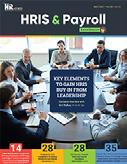

I regularly read and contribute to Leadership Excellence and Talent Management Excellence. I use many of the articles I read to augment my own presentations and I often share the articles with my clients. They are always quick, right on target for the latest issues in my field, and appreciated by my clients. If you want to stay up to date on the latest HR trends, choose a few of the different issues from the Excellence series of publications.







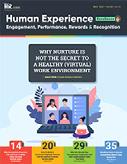 Dave Ulrich
Rensis Likert Professor, Ross School of Business, University of Michigan Partner, The RBL Group
Julie Winkle Giulioni Author, Virtual /Live Keynote Presenter, Inc.’s Top 100 Leadership Speakers
Dr. Beverly Kaye CEO, BevKaye&Co.
Dave Ulrich
Rensis Likert Professor, Ross School of Business, University of Michigan Partner, The RBL Group
Julie Winkle Giulioni Author, Virtual /Live Keynote Presenter, Inc.’s Top 100 Leadership Speakers
Dr. Beverly Kaye CEO, BevKaye&Co.
WHY EXCELLENCE PUBLICATIONS?
We’re eager to hear your feedback on our magazines. Let us know your thoughts at ePubEditors@hr.com
Talent Intelligence Platforms: The Next Big Thing In HR Tech
Understanding the role of talent intelligence platforms in HR tech
By Vijay Bankar, HR Generalist
Thesedays the market is inundated with a plethora of human resources (HR) tech options with solutions championed by artificial intelligence (AI). Almost every vendor flaunts their offerings, expatiating the salient AI features of their product. And how it would successfully address our concerns relating to people management. And the fortuitous arrival of Generative AI seems to be the ‘next-gen’ nascent technology within the HR tech landscape. It will offer use cases limited only by the fecundity of our imagination. The often cited main benefits of AI tools, as Sir Humphrey Appleby would say, “Thereby releasing their overlords for the more onerous duties and profound deliberations that are the inevitable concomitant of their exalted position.”
Given the rapid innovations in product capabilities, purveyors do not fit into one category. It leads to misapprehension about the categorization due to overlap. The absence of clear demarcation makes it inscrutable and incomprehensible for lay people to understand the product offerings. Here, expert HR tech analysts can disabuse the nuances with a lucid explanation of HR tech options.
I regularly follow articles, podcasts, webinars, and videos by Josh Bersin to stay informed about the updates. He is the cognoscente, virtuoso, and HR analyst of outstanding merit. He mentions in his trends report for 2023, “We would suggest this is the next big thing—and we call this effort ‘talent intelligence’.” It intrigued my interest in this area leading to my writing this article. In September 2018, LinkedIn released its ‘Talent Insights’ tool, and I first came across this concept around January.
So, what is talent intelligence? The practitioners, HR tech analysts, and vendors define this concept in multitudinous ways. The book ‘Talent Intelligence’ by Toby Culshaw defines it as:
“Talent Intelligence is the augmentation of internal and external people data with the application of technology, science, insights and intelligence relating to people, skills, jobs, functions, competitors and geographies to drive business decisions.”
This comprehensive definition underscores the significance of talent Intelligence practitioners and remarkably covers numerous areas of their work.
Submit Your Articles HCM Excellence (APAC & Middle East) presented by HR.com May 2023 8
COVER ARTICLE
Given the trends and rapid changes in the external environment, HR professionals are essentially compelled to hire new employees with unique skills and design innovative approaches to organize pay structures and career pathways. In this context, talent intelligence becomes an indispensable prerequisite for developing effective talent strategies.

To successfully tackle this, the research carried out by Josh Bersin suggests an integrated conflation of what they consider the ‘Four Rs’: Recruiting,
Retention, Reskilling, and Redesign. Holistically, the talent intelligence teams can help us to hire the so-called ‘purple squirrels’ considering location, skills, pay model, work arrangements, and numerous other factors. And also provide valuable career pathway suggestions and perspicacious insights to implement upskilling & reskilling initiatives. Seemingly, we can develop this team by effectively melding expertise from sourcing analytics, skills analytics, workforce planning, and people analytics.
Josh suggests that there is a massive market for talent intelligence platforms. These are AI-driven data platforms with applications beyond recruitment. We can deploy them for sourcing, internal talent matching, and succession management. We may also utilize them for assessments, job design, and skills analysis since the vendors equip them with skills taxonomies.
By using skills inference technology, we can effectively use our people data to identify skills gaps and design bespoke career pathways to close them. Also, recommend successors and mentors and even benchmark comparisons with other organizations. As Linda Sharkey says, “Companies that collect and effectively analyze their talent data are much more likely to experience better business outcomes.”
Submit Your Articles HCM Excellence (APAC & Middle East) presented by HR.com May 2023 9
Next Big Thing In HR Tech
Talent Intelligence Platforms: The
Benefits of Implementing a Talent Intelligence Platform

● Harness the untapped potential of our people data
Our employees are generating an immense amount of data every day, [e.g., recruitment data (application tracking software (ATS), candidate relationship management (CRM), communications data (active & passive listening), appraisals data, learning data learning management system (LMS), learning experience platform (LXP), organizational network analysis (ONA), etc.
Now we have the latest tools to make sense of it by leveraging cutting-edge technologies, such as machine learning and deep learning. In addition to internal data, talent intelligence can utilize external data sources in this process (e.g., employee profiles, labor market vendors, industry groups, etc.).
We can also manage and derive actionable insights from contingent talent data to facilitate better decision-making. The purveyors equip these solutions with a granular universal talent data set. It helps us leverage the full potential of our employee data in manifold ways.
● Effective hiring and workforce planning
A resume may reflect a blinkered view of the actual potential of a candidate/employee. The talent intelligence platform can fill the gap by identifying missing skills and validating skills using various sources of talent data (internal and external). The provenance of up-to-date data sets is cutting-edge talent engines. It enables prompt tracking ebb and flow of demand and supply of different skills and capabilities based on geographies and other parameters. Also, figure out where we can find in-demand skills and talent while minimizing costs and improving the efficiency of hiring processes.
Submit Your Articles HCM Excellence (APAC & Middle East) presented by HR.com May 2023 10
Talent Intelligence Platforms: The Next Big Thing In HR Tech
To devise a robust workforce plan from the perspective of future talent and skills requirements, we get comprehensive insights into our talent, market, and industry. It helps us analyze multifarious scenarios to a T, consonant with our strategic projections. Essentially helping us to track, update and evaluate job profiles for emerging skills. According to our organization’s strategic requirements, we can develop those skills and talent through bespoke reskilling and upskilling initiatives. It also helps us to benchmark against other companies.
● Better career management


For career pathway suggestions from AI tools, we can capitalize on the skills taxonomies. Concomitantly, also create a compelling employee experience in the process. Talent intelligence platforms use neural networks and algorithms. It considers immeasurable data points beyond human capabilities to create bias-free, data-driven insights for employee growth and development. It understands the skills owned by our employees and provides recommendations bespoke to every employee.
Providentially, coming up with suggestions that the employee could not have previously imagined they have potential in specific domains. This essentially creates a range of options for employee movement










within the organization, paving the way for enhancing employee engagement.
● Maximizing our skill set by identifying and leveraging adjacent skills
One of the salient benefits of implementing talent intelligence platforms is to understand and develop skills in general and adjacent skills in particular. It recommends suitable career pathways to upgrade skills in specific domains. Especially those that employees may have otherwise overlooked or missed. Implementing various bespoke reskilling initiatives can help us achieve actual employee potential.
We can successfully address employee concerns about professional career growth and development opportunities within the company (according to Gallup research - it was the most cited concern among 87% of millennials), especially by identifying complementary skills to employees’ existing attainments. We can encourage and enable their growth within the company as per their learnability. We can also hire considering adjacent skills, especially for emerging skills, while enhancing our available talent pool. Given our projected strategic requisitions, it can become the mainstay of our future-oriented talent strategy.
Submit Your Articles HCM Excellence (APAC & Middle East) presented by HR.com May 2023 11
Talent Intelligence Platforms: The Next Big Thing In HR Tech
● Developing an inclusive workforce by being an equal opportunity employer
The appreciable benefit of implementing talent intelligence platforms is an opportunity to position ourselves as an equal opportunity employer and improve our employment brand. It can also be a part of our ongoing environmental, social, and governance (ESG) initiatives and diversity, equity, inclusion, and belonging (DEIB) efforts. To foster a culture of inclusion, we can get bias-free talent insights. If we effectively manage candidate segments, it helps us identify appropriate talent pools within specified locations. We can approach them according to our requirements to create a proper mix of employees. For all our employees, we can design inclusive hiring practices and training & development opportunities while minimizing bias and discrimination.
Many solutions provide an option to anonymize candidate/employee profiles by removing numerous indicators (e.g., name, gender, race, ethnicity, religion, etc.) to facilitate impartial judgments and bias-free decisions. It ensures fair opportunity for every employee to succeed regardless of their background. It culminates in providing equal opportunities to various segments of candidates and employees, thereby enabling a culture of inclusion.
Thus, we can say that regardless of the HR initiative, one must deliberate on the following concerns before commencement:
1. Why are we implementing this?
2. Who will benefit from this?
3. How many resources will it require? (e.g., human, financial, and other)
4. How long will this take for implementation?
5. What is it that we are trying to achieve?
6. What will be the perceived business value for each stakeholder?
7. Is this in line with our HR strategy?
8. How does this help in achieving overall organizational strategy?
Conclusion
As suggested by various HR tech experts, successfully implementing talent intelligence platforms will indubitably improve the process
of talent acquisition and talent management. Remarkable insights gained in the process will be the cornerstone of developing our talent strategy to achieve the goals and objectives of our business.
Josh Bersin suggests that although it is a new domain, many large companies are proceeding in this direction. He says that typically they progress from ‘sourcing intelligence’ to ‘people analytics’ to ‘skills and career intelligence’ to ‘talent intelligence.’ The benefits of implementation are not limited to talent acquisition, and cover a vast array of talent management across the organization. We can conclude with the following quote:
“Organizations need more than data. They need insight about their people to be competitive in world markets. This is because people are often the only source of competitive advantage.”
— Paul Turner
Vijay Bankar is a human resources (HR) expert working with multinational organizations to foster the culture of equity, inclusion, and belonging, and a ‘Generalist HR professional’, who contributes towards efficacious implementation of the HR - functional tactics.
Would you like to comment?

Submit Your Articles HCM Excellence (APAC & Middle East) presented by HR.com May 2023 12
Talent Intelligence Platforms: The Next Big Thing In HR Tech
(Make Your People Before You Make Your Products, 2014)
The High Cost Of Replacing Top Talent
Calculating the true financial impact of employee attrition
By Bhavani Arunchalam, Annamalai University
Employee attrition can have significant financial impacts on a company. While direct cost, such as recruitment and hiring expenses, are easily quantifiable, indirect cost related to lost productivity, training, and reduced morale are more difficult to measure. In this article, we will explore the direct and indirect costs of employee attrition and provide guidance on how companies can reduce these costs and retain top talent.
Employee Attrition
Employee attrition is an inevitable reality for most companies. However, when top talent leaves, the financial impact can be significant. Not only is there the direct cost of finding and hiring a replacement, but also the indirect costs associated with lost productivity, decreased morale, and the time and resources required to train a new employee.
Calculating the true financial impact of employee attrition can be challenging, but companies
need to understand the full extent of these costs.
Direct Cost of Employee Attrition
Direct cost of employee attrition are the costs incurred by a company in replacing an employee who has left. These costs are usually monetary and include expenses related to recruitment, hiring, and onboarding a new employee. Some of the most common direct costs of employee attrition include:
1. Recruitment cost: The cost of advertising job vacancies, conducting job fairs, or hiring headhunters or recruiters. These costs can vary depending on the level of the position and the industry.
2. Hiring cost: The cost of screening, interviewing, and hiring a new employee. This includes the time spent by HR personnel and hiring managers to review resumes and applications,
conduct interviews, and make job offers.
3. Relocation cost: If a new employee needs to relocate for the job, the company may have to pay for moving expenses, temporary housing, and other relocation costs.
4. Signing bonuses: Companies may offer signing bonuses to attract top talent. These bonuses can vary depending on the level of the position and the industry.
5. Training cost: Companies need to invest in training new employees to get them up to speed with the company’s policies, procedures, and systems. This includes the time and resources spent on orientation, job training, and mentoring.
6. Severance pay: In some cases, the company may be required to provide severance pay to an employee, who is leaving voluntarily or involuntarily.
Submit Your Articles HCM Excellence (APAC & Middle East) presented by HR.com May 2023 13
The High Cost Of Replacing Top Talent
The direct cost of employee attrition can be significant, especially if the company is losing a top-performing employee or an employee in a specialized role. By minimizing the direct cost of employee attrition, companies can reduce the financial impact of lost talent and improve their bottom line.
Indirect Cost of Employee Attrition
The indirect cost of employee attrition is often overlooked but can be even more significant than the direct cost. Indirect cost of employee attrition are costs that are not immediately obvious or easily quantifiable. These costs are related to the impact of the employee’s departure on the company’s operations, morale,
and productivity. Some of the most common indirect costs of employee attrition include:









1. Lost productivity: When an employee leaves, there is a gap in the workforce that needs to be filled. The remaining employees may need to take on extra work, leading to increased stress and decreased productivity. This can also lead to decreased quality of work, errors, and missed deadlines.
2. Training cost: Not only do new employees need to be trained, but existing employees may need to be trained to cover the work of the departing employee. This can be time-consuming and costly, taking time away from other important tasks.
3. Lost knowledge: Employees who have been with the company for a long time have accumulated institutional knowledge about the company’s operations, procedures, and systems. When they leave, this knowledge is lost, and it can take time to replace it.
4. Reduced morale: Employee turnover can have a negative impact on morale. The remaining employees may feel overworked and undervalued, leading to decreased job satisfaction and engagement.
5. Recruitment cost: If the company has a high rate of turnover, it may be more difficult to attract top talent in the future. This can increase recruitment
Submit Your Articles HCM Excellence (APAC & Middle East) presented by HR.com May 2023 14
costs and make it harder to find qualified candidates.
6. Negative impact on customer relationships: If an employee who had a close relationship with clients or customers leaves, it can have a negative impact on those relationships. The company may lose business or may need to invest additional time and resources in rebuilding those relationships.
The indirect cost of employee attrition can be significant and may have a long-term impact on the company’s operations and bottom line. By addressing these costs and taking steps to
retain top talent, companies can reduce the impact of employee attrition and improve their overall performance.
Calculating the Financial Impact of Employee Attrition
To calculate the financial impact of employee attrition, companies need to consider both the direct and indirect costs. One way to do this is to use a simple formula:
Total Cost of Employee Attrition = Direct Cost + Indirect Cost
Direct cost include the expenses related to recruiting, hiring, and onboarding a new employee.
Indirect cost include the impact on productivity, the time and resources required to train a new employee, and the impact on team dynamics and customer relationships.
For example, if a company loses a top salesperson, the direct cost of finding and hiring a replacement might include recruiter fees, relocation cost, and signing bonuses, totaling $50,000. The indirect costs of lost sales, decreased productivity during the transition period, and the impact on customer relationships might total $100,000. In this scenario, the total cost of employee attrition would be $150,000.
Submit Your Articles HCM Excellence (APAC & Middle East) presented by HR.com May 2023 15
The High Cost Of Replacing Top Talent
Reducing Employee Attrition
In addition to understanding the direct and indirect costs of employee attrition, there are several strategies that companies can implement to reduce turnover and retain top talent. Some of these strategies include:
1. Creating a positive work environment: Companies can foster a positive work environment by offering competitive salaries and benefits, providing opportunities for professional development and growth, and promoting a healthy work-life balance.
2. Improving communication: Effective communication between employees and management can help build trust and create a sense of engagement. Companies can implement regular feedback and check-ins, as well as provide opportunities for employees to voice their opinions and concerns.
3. Offering flexible work arrangements: Flexible work arrangements, such as remote work or flexible schedules, can help employees to achieve a better work-life balance and reduce stress.
4. Providing meaningful work: Employees are likelier to stay with a company if they feel that their work is meaningful and contributes to its overall goals. Companies can align employee roles and responsibilities with
their strengths and interests to create a sense of purpose.
5. Investing in employee development: Providing opportunities for training, education, and career development can help employees to grow and advance within the company. This can lead to increased job satisfaction and reduced turnover.
By implementing these strategies, companies can create a positive work environment, promote employee engagement and satisfaction, and reduce the financial impact of employee attrition.
Conclusion
The financial impact of employee attrition can be significant, particularly when top talent leaves. While the direct costs of recruitment and hiring are apparent, companies must also consider the indirect costs associated with lost productivity, decreased morale, and the time and resources required to train a new employee. By understanding the true financial impact of employee attrition, companies can take steps to retain top talent and minimize turnover costs.
References
1. Cascio, W. F. (2006). Costing human resources: The financial impact of behavior in organizations. South-Western College Pub.
2. Hom, P. W., & Griffeth, R. W. (1995). Employee turnover. Southwestern.
3. Lee, T. W., Mitchell, T. R., &
Sablynski, C. J. (1999). Qualitative research in organizational and vocational psychology: A review and methodological comparison. Journal of vocational behavior, 55(2), 170-196.
4. Osterloh, M., & Frey, B. S. (2000). Motivation, knowledge transfer, and organizational forms. Organization Science, 11(5), 538-550.
5. Phillips, J. J. (2016). The ROI of human capital: Measuring the economic value of employee performance. AMACOM Div American Mgmt Assn.
Bhavani Arunchalam is currently pursuing Ph.D. in Business Administration from Annamalai University. She has delivered guest lectures on various management topics. Several publications in UGC and international journals have recognized her research work.
Would you like to comment?

Submit Your Articles HCM Excellence (APAC & Middle East) presented by HR.com May 2023 16
The High Cost Of Replacing Top Talent
Veena Satish is the VP of People and Culture at MoEngage
Before joining MoEngage, Veena was the Director of Human Resources at Walmart for over six years. During this time, she has contributed to Walmart’s growth from a team of 500 to a 7,000-member workforce.
In an exclusive interview with HR.com, Veena talks about her HR journey and shares valuable insights on new job roles in the industry, the future of HR, and so on.

CHRO CORNER
Inspiring the Next Generation of HR Leaders
Where do HR leaders draw inspiration from? What are their worst nightmares? How did they stand the test of the changing times?
In this segment, we will trace your journey to the top.
This is your story - a story that is made of extraordinary accomplishments, methods that helped you overcome adversity, innovative programs that you led, and fundamental changes that you brought in. It's your chance to inspire the next generation of leaders.
Exclusive Interview with Veena Satish, VP of People and Culture, MoEngage
What has your HR journey been like, and what influenced you the most to positively impact your career?
I have had an accidental career in human resources (HR), but a fruitful one with no regrets. The career that I landed brought me a great blend of challenges and developmental opportunities to adapt to unknowns, ambiguities, and uncertainties.
Spending a few years in talent acquisition and learning & development functions provided me with a first-hand insight into what it was like to work as an HR professional. I have been able to work for both large, multinational corporations and growing startups which opened up a lot of internal avenues for me to learn and evolve. Additionally, I have fostered a positive and supportive network along the way that provided me with useful career advice and ongoing learning experiences.
Looking back at my journey, I feel very fortunate to have worked with many leaders, who guided me with first-hand insight into what makes an amazing workplace and culture. I suppose this early exposure had a lot of influence on my own personal values, approach to HR, and views toward leadership qualities.
Submit Your Articles HCM Excellence (APAC & Middle East) presented by HR.com May 2023 17
Q.
There have been many influencers throughout my career journey who have impacted me positively. To begin with, my mother always taught me that no matter how helpful your friends or partner might be, you must always be independent enough to survive on your own and create your own identity. Additionally, some of the great leaders I have worked with positively influenced me long after I transitioned. My former colleagues have taught me resilience and patience, which ultimately strengthened my self-belief.
Q.What were your challenges during the early days of your career compared to those of today?
Looking back far enough, if I were to draw a parallel between the challenges of the early days of my career to this day, I would broadly split them into two categories: the first is professional/inspirational guidance, and the second is social conditioning ideologies.
Reflecting on these challenges, the biggest challenges that I went through early on were not having strong career guidance and a lack of self-awareness. These are so essential at every stage of your life and career.

It was difficult for me to pinpoint my own strengths and aspirations with the available career choices and opportunities I had back then. Lack of self-introspection, coupled with the absence of professional guidance in an evolving workplace, can be difficult until you gain experience and become focused on success.
The second biggest challenge that I endured was the social conditioning pressure that most women go through. From an early age, my inner circle played an influential role in the formation of my identity, beliefs and outlook. However, it was important for me to trust myself and develop into the person I wanted to be.
Fast forward to today, although maybe not as explicit, I still believe there are challenges related to unconscious bias. It is certainly not easy to address all of them as they emerge from different conditions and factors. While there is no definitive solution, I have learned to confront it or use other ways to navigate through it. Another issue I see today is the lack of sponsors for women leaders. While there have been considerable advances for women leaders from a mentoring standpoint, there still seems to be a fine line between sponsoring and mentoring.
Submit Your Articles HCM Excellence (APAC & Middle East) presented by HR.com May 2023 18
CHRO Corner
Both sponsoring and mentoring are related and are equally powerful and important tools for a women’s personal success. A mentor can be at any hierarchical level, restricted to emotional support and providing career guidance. A sponsor, in contrast, is much more invested in their proteges. A sponsor will help connect, build, and advocate for career opportunities and advancement. Women need both.
What is one of the most overlooked issues facing HR today?
Developing an engaging culture is a critical piece of an HR function that is often overlooked. Even though it takes an entire team to create a culture, an HR team can help foster it. For example, at MoEngage, we are committed to fostering a people-centric, value-driven culture that is built on ownership and trust. We encourage our team to embrace our company’s core values, which consist of thinking of the customer first, driving ownership, being innovative and experimenting, and being open and transparent while demonstrating humility.
In 2020, during the outbreak of Covid-19, we faced many challenges and had to make many changes like other companies did. At the peak time of the pandemic, we became fully remote. During this period, communication became critical to preserving our company culture. As you can imagine, having to shift from an in-person onboarding experience to a virtual and remote one for onboarding our new hires had its challenges. We created remote workforces to keep people informed, and even set up a program for our employees to have virtual, one-on-one office hours with our founders to share feedback and have a direct conversation about our founders’ experiences and plans. The idea was to build on our core values of openness, transparency and trust, while also providing a medium for employees to reach out to our leaders with suggestions, feedback, ideas, and experiences. Don’t we all love approachable leaders?
And more recently, we launched a new tool called Amber to help keep our teams globally informed and answer questions they may have on the spot, so that employees can get answers to their pressing questions straightaway.
Name: Veena Satish
Designation: VP of People and Culture
Company: MoEngage
The total number of employees: 700+
When did you join the current company : November 2021
Total experience in HR: More than 25 years
Hobbies: Reading, listening to music and spending time with family
The book I am currently reading – “The Light We Carry - Overcoming in Uncertain Times” by Michelle Obama
What can HR do about “Quiet Quitting?”
It is very important to understand the varied reasons behind the trend of quiet quitting, as it can drastically vary for different people. For instance, some employees may feel undervalued by their organizations, while others may be feeling burnout due to the lack of work-life balance. Some team members may feel the need to reconsider their priorities. However, most often, employees who are quiet quitters are burned out and stressed because of workload. It is very important to keep a constant pulse check on the workload of the employees and ensure that there is no overload and that any increases are kept to a minimum.
Some employees, who are on the verge of quiet quitting, may also be very dissatisfied with their compensation, rewards, and recognition for any extra mile that they take. Whenever employees are going above and beyond, it is important to acknowledge and reward them proactively, ensuring that they are competitively paid for their work while continuing to motivate them. It is essential for organizations to proactively evaluate their existing benefits and other employee well-being offerings to emphasize their commitment to employees’ physical, mental, and emotional health. Organizations should also ensure driving managerial effectiveness since
Submit Your Articles HCM Excellence (APAC & Middle East) presented by HR.com May 2023 19
CHRO Corner
Q.
Q.
employees spend a significant amount of time with them. Coaching, educating managers and sensitizing them to proactively address the needs and concerns of their employees go a long way.
Last but not least, organizations should create a transparent, open, and approachable communication platform so that employees feel heard and understood at any given point. It is crucial for employees to feel safe expressing their pain points.
Do you see any new job roles being created by the transformation?
Yes, I do see more roles being focused on employee retention. These could be part of a talent management or HR team, or they could be dedicated career development leaders who are focused on the individual team and function development across the organization. People will stay at organizations they thrive in, and when you continue to help them develop and strengthen their skill sets and learn new skill sets, they are more likely to stay engaged and also be top contributors to the broader organization.
Major HR trends you expect in the next 5 years.

The hybrid environment is here to stay. Managing remote working engagement, motivation, and culture
building in a hybrid model will be a high focus looking at the future of work. Further, fostering the employee experience during remote work will be an additional focal point. In a fast-paced environment with a limited shelf life on existing skills, reskilling and skilling of employees will bear heavy emphasis. This will also show potential alternate career paths to employees.
Many companies today are aggressively driving their diversity and inclusion efforts to promote an inclusive culture. More empathy at the workplace will continue to remain a trend as yet another priority that will result in creating a better workplace with enhanced productivity.
What is your leadership mantra?
My leadership mantra is: Be confident, stay positive, and be resilient at all times.
Life is full of surprises and adversity, it is important for one to learn how to cope with the unexpected and work through any challenges. Changing how you react to adversities will directly reflect how you feel about yourself. Remaining confident and optimistic while being able to bounce back quickly will help you feel empowered and liberated.
In a nutshell, I firmly believe there is no point in being worried about something that has already happened and cannot be changed; in contrast, one should put their energy and focus toward what can be done next to make things better. Of course, without missing the lessons learned during the process.
Would you like to comment?
Submit Your Articles HCM Excellence (APAC & Middle East) presented by HR.com May 2023 20
CHRO Corner
Q. Q. Q.
The Future Of Remote Work In India In 2023
Embracing HR tech for efficient remote work
By Ravinder Goyal, Erekrut HR Automation Solutions
Theworld has undergone a massive shift in the way work is conducted since the onset of the Covid-19 pandemic. Organizations had to embrace remote work models to sustain business continuity, and this trend has continued to gain popularity.
In India, the remote work trend is also picking up, with more companies adopting hybrid work models.
In this article, we will discuss the future of remote work in India in 2023 and highlight some data to prove the trends.
Remote Work in India in 2021-2022
According to a study conducted by the National Association of Software and Service Companies (NASSCOM), India’s remote work market is expected to reach $5 billion by 2025. The study also revealed that the Indian remote work sector had grown by 25% in 2020-2021 due to the pandemic’s impact.

Submit Your Articles HCM Excellence (APAC & Middle East) presented by HR.com May 2023 21
As per the survey conducted by FlexJobs, 72% of Indian workers feel more productive when working from home. Additionally, 61% of respondents said they were satisfied with their current remote work set-up.
These statistics indicate that remote work has become an integral part of the Indian workforce, and its popularity is only going to increase in the coming years.
Let us look at some of the trends that we can expect in the future.
1. Hybrid Work Models Will Be More Common
As organizations slowly return to normalcy post-pandemic, they are realizing that remote work has its advantages. Hybrid work models, which combine remote work and in-office work, are expected to become more common.
This approach allows employees to have flexibility in choosing where they work, which leads to better work-life balance. In India, large corporations, such as TCS, Infosys, and Wipro, have already adopted hybrid work models, and more companies are expected to follow suit.
2. Increased Focus on Employee Wellbeing
Remote work can take a toll on employees’ mental and physical health, leading to burnout and exhaustion. Companies are now realizing the importance of employee well-being and are taking steps to address it. For instance, companies are providing wellness resources, such as online yoga classes, mindfulness sessions, and access to mental health professionals. Such initiatives are expected to become more common in the future as organizations prioritize employee well-being.
3. Greater Use of Technology
The pandemic has accelerated the adoption of technology in the workplace, and this trend is expected to continue. In India, the use of collaboration tools, such as Zoom, Teams, and
Google Meet, has increased significantly. This has led to greater efficiency in communication and collaboration, which is essential for remote work.
In the future, we can expect more advanced technologies, such as AI-powered virtual assistants and immersive virtual reality meeting platforms, to be adopted.
Challenges to Remote Work in India
While remote work has many advantages, it also has its challenges, especially in India. One of the significant challenges is the lack of proper infrastructure, such as high-speed internet, reliable power supply, and suitable workspace. While larger corporations can provide such infrastructure to their employees, small and medium-sized enterprises may struggle to do so. This can result in an uneven playing field for employees, with some having better resources than others. Additionally, remote work can lead to social isolation, which can negatively impact employee mental health.

Conclusion
Remote work is the future of work, and India is no exception. The pandemic has accelerated the adoption of remote work models, and this trend is expected to continue in the future. We can expect to see more hybrid work models, increased focus on employee well-being, and greater use of technology.
However, lack of proper infrastructure and social isolation are significant challenges that need to be addressed. Organizations that can overcome these challenges and embrace remote work will be better positioned to attract and retain top talent in the future.
Submit Your Articles HCM Excellence (APAC & Middle East) presented by HR.com May 2023 22
Ravinder Goyal is the Co-Founder and Managing Director of Erekrut HR Automation Solutions. He has 27+ years of entrepreneurship experience in vocational training and placement.
Would you like to comment? The Future Of Remote Work In India In 2023
Moonlighting In The Indian IT Industry: The Good, The Bad, And The Ugly
Navigating the thin line of moonlighting ethics in India
By Harshal Goyal, NLB Services
equivalent to dual employment. While on the one hand, organizations like Wipro, TCS and IBM have termed Moonlighting as unethical and cheating, on the other, organizations like Tech Mahindra and Swiggy have enabled their employees to explore avenues around the same.
The dividing line between what is acceptable and what is not is a thin one.
Benefits of Moonlighting

We have all seen the growing trend of moonlighting in the Indian IT industry. While the concept of working a second job to supplement income is not new, the rise of the gig economy and increasing demand for freelance work has made it easier than ever for IT professionals to pursue additional opportunities
None of the Indian labor laws have defined “Moonlighting", and it cannot be considered
1. Additional skills and knowledge: Employees who moonlight may gain new skills and knowledge from their second job, which they can bring back to their primary job. This can be particularly beneficial if the employee is working in a different industry or field, as they can bring fresh perspectives and ideas to the organization.
2. Improved job satisfaction: Moonlighting can provide employees with additional income and a sense of fulfillment from pursuing their interests or passions outside of work. This can lead to increased job satisfaction and motivation in their primary job.
Submit Your Articles HCM Excellence (APAC & Middle East) presented by HR.com May 2023 23
Click here to high resolution image Top Pick
3. Reduced financial stress: If an employee is struggling financially, moonlighting can provide them with additional income to help ease their financial burden. This can lead to increased focus and productivity at work, as the employee is less worried about their financial situation.
4. Increased loyalty: By allowing employees to moonlight, organizations may increase employee loyalty and reduce turnover rates. Employees who feel supported and trusted by their organization are more likely to stay with the company in the long term.
Overall, if managed properly, moonlighting can be a positive experience for both employees and organizations. However, it is important for organizations to establish clear policies around moonlighting and to communicate them effectively to employees to ensure that it does not negatively impact job performance or create conflicts of interest.
Risks of Moonlighting
1. Conflict of interest: If the second job involves working for a competitor or engaging in activities that could negatively impact the primary job, it can create a conflict of interest.
2. Reduced productivity: Working long hours without adequate rest or downtime can lead to burnout and reduced productivity, which can negatively impact the primary job.
3. Violation of employment agreements: Some employment agreements may prohibit moonlighting or require approval from the employer before engaging in secondary employment. Violating such agreements can lead to disciplinary action or termination.
4. Working in a regulated industry: If the second job involves working in a regulated industry, such as healthcare or finance, it may require licensing or certifications that could conflict with the primary job or require disclosure to the employer.

Submit Your Articles HCM Excellence (APAC & Middle East) presented by HR.com May 2023 24 Moonlighting In The Indian IT Industry: The Good, The Bad, And The Ugly
5. Availability: If the second job requires an individual to be available during the same hours as the primary job, it can create scheduling conflicts and impact work performance.
It is important to consider the potential conflicts before engaging in moonlighting and to ensure that any secondary employment does not interfere with the primary job or violate any agreements or policies.
Navigating Moonlighting in the Indian IT Sector
Given the risks and benefits of moonlighting, it is important for IT professionals to carefully consider their options and seek guidance from their employers. Organizations need to encourage open and honest communication between employees and their managers to ensure that all parties are aware of any potential conflicts of interest or legal issues.
In addition, it is important for employers to provide clear guidelines on moonlighting and to enforce policies consistently across the organization. This
may include restrictions on working for competitors or clients, limitations on the use of company resources, and requirements to disclose moonlighting activities to the employer.
Ultimately, the decision to pursue moonlighting opportunities is a personal one that must be weighed carefully against the potential risks and benefits. With the right approach, IT professionals can find a balance between earning extra income and upholding ethical and legal standards in India’s IT industry.
Harshal Goyal is the Vice President of Total Talent Solutions - Staffing, RPO & Perm, at NLB Services
Would you like to comment?

Submit Your Articles HCM Excellence (APAC & Middle East) presented by HR.com May 2023 25
Moonlighting In The Indian IT Industry: The Good, The Bad, And The Ugly
HRCI® & SHRM® CERTIFICATION PREP COURSES
GROUP RATES AVAILABLE
For HR Professionals
Show that management values the importance of the HR function, and has a commitment to development and improvement of HR staff.
Ensure that each person in your HR department has a standard and consistent understanding of policies, procedures, and regulations.
Place your HR team in a certification program as a rewarding team building achievement.
For Your Organization
Certified HR professionals help companies avoid risk by understanding compliance, laws, and regulations to properly manage your workforce.
HR Professionals lead employee engagement and development programs saving the company money through lower turnover and greater productivity and engagement.
A skilled HR professional can track important KPIs for the organization to make a major impact on strategic decisions and objectives, including: succession planning, staffing, and forecasting.
HR.com/prepcourse CALL TODAY TO FIND OUT MORE 1.877.472.6648 ext. 3 | sales@hr.com
1 Less expensive than a masters or PhD program, and very manageable to prepare with
2. legislation and best practices
3. Recognized, Industry benchmark, held by 500,000+ HR Professionals
Group Rate Options
We offer group rates for teams of 5+ or more for our regularly scheduled PHR/SPHR/ SHRM or aPHR courses.
For groups of 12+, we can design a more customized experience that meets your overall length of the course.
Groups rates for HRCI exams are also available as an add-on.
All group purchases come with 1 year of HR Prime membership for each attendee to gain the tools and updates needed to stay informed and compliant

CALL TODAY TO FIND OUT MORE 1.877.472.6648 ext. 3 | sales@hr.com | HR.com/prepcourse
1 2 3
AI-Based Employee Onboarding: Impact On Productivity
Transforming onboarding with AI and automation
 By Amit D. Mishra, iMocha
By Amit D. Mishra, iMocha
Many companies spend more than a month searching for suitable candidates to fill their open positions, but more than 10% of those who are
selected drop out before joining the company. Additionally, a significant number of new hires leave during the onboarding process or within the first six
months of employment.[1] One of the main reasons for this high dropout rate is the lack of a proper onboarding experience.
Submit Your Articles HCM Excellence (APAC & Middle East) presented by HR.com May 2023 28
AI-Based Employee Onboarding: Impact On Productivity
For example, some companies may take weeks to onboard new employees, while others may fail to provide clear guidelines on job responsibilities or necessary technological support. This highlights the need for companies to prioritize creating a positive onboarding experience for new hires, as it can improve employee retention and ultimately benefit the company as a whole.
The solution to such challenges is an agile, digitally-driven onboarding process powered by artificial intelligence (AI) and automation integration. With technology already being deployed in various aspects of recruitment and management of the workforce, it seems only natural that AI automation tools are entrusted with onboarding as well. Due to the pandemic, virtual hiring became the

standard practice, and many companies have continued with this approach. As a result, 68% of enterprises have implemented automated onboarding processes.[2]
Given the trend and the benefits automation tools provide, it is only a matter of time before others make the transition to attract the right talent. Transitioning to an AI-driven onboarding process can enhance employee experience and boost their productivity throughout their tenure at the company. Let us see how companies can use such technologies to transform various aspects of the onboarding experience.
Acclimatization
New joiners often have certain expectations and apprehensions. Irrespective of the role they join,
they need clarity and familiarization with the people they will work with. The company culture of every organization is different, and so are the administrative and HR processes.
Through digital communication and support tools, companies can make the acclimatization process simple and convenient. The new hires can fill in their details, undertake analytical tests, or respond to questionnaires digitally in a paperless manner, and get set for work even if they are working remotely.
Speeding Up the ‘Go Live’ Timelines
The usage of technology to ensure clear communication and eliminate any delays or confusion is essential.
Submit Your Articles HCM Excellence (APAC & Middle East) presented by HR.com May 2023 29
Digitization of onboarding processes reduces the time taken to work and can boost employee retention by 82% and productivity by more than 70%.
[3] Moreover, in the case of tech hires, they can quickly familiarize themselves with the company’s technology stack, development methodologies, and coding practices, which can reduce the time it takes for them to become productive and start contributing to the team.
Employee Engagement
Hand-holding through clear and sustained communication is critical to successful onboarding. Information about an employee’s key result areas (KRAs) or details about benefits, office processes, learning and development frameworks, and a company’s initiatives toward sustainability and inclusiveness must be efficiently conveyed through employee engagement.
During the onboarding stage, it is important for reporting managers to check in regularly to ensure comfort and access to desired support for newcomers. Further, the tools can help with goal setting and guide them on their current roles and responsibilities and growth roadmaps.
According to a study by Jobvite, approximately 30% of new joiners leave the company within the first three months of joining. This is why it is ideal that the reporting managers extend the incubation/ onboarding support to the entire
90 days and enable a seamless transition to the new work culture.
In order to achieve these goals, companies are integrating AI-powered chatbots into their portals to provide 24/7 support for employee queries related to company policies and practices. Additionally, AI and data analytics tools can be integrated to help business leaders measure initial performance and analyze feedback data to identify new hires who may require additional support and guidance.
Personalized Experience
AI tools can provide a customized onboarding experience for new hires based on their role, skillset, and preferences, ensuring they receive the necessary information and training for their specific job requirements. This can help employees become productive faster and feel more confident in their abilities.
With the help of personalized experiences, managers can increase engagement and motivation, and reduce the risk of new hires feeling overwhelmed or disengaged during the onboarding process.
Employee Retention
Employees love to stick around with organizations that make them feel valuable and extend a warm welcome. Starting a new employment stint with constructive engagement, introductions, and completing joining formalities on day one is a great way to boost
employee confidence and retention. AI-powered employee onboarding, performance monitoring through data analytics, feedback surveys, and skill mapping to identify training or upskilling needs are some of the ways in which AI-powered talent management platforms can boost employee retention.

Conclusion
Companies can reduce employee churn through advanced and automated onboarding tools. The efficiency of onboarding processes is determined by the clarity and support that the employees are provided from day one. That is how great companies were able to build company cultures that are respected and celebrated all over the world.
Sources:
[1] https://leena.ai/state-of-employee-onboarding-united-states
[2] https://leena.ai/state-of-employee-onboarding-united-states
[3] https://levity.ai/blog/ automate-your-employee-onboarding-process-with-ai
Submit Your Articles HCM Excellence (APAC & Middle East) presented by HR.com May 2023 30
Would you like to comment?
Amit D. Mishra is the CEO and Founder of iMocha (formerly known as Interview Mocha).
AI-Based Employee Onboarding: Impact On Productivity
Strategies To Keep Your Most Valuable Assets Intact
A guide for businesses in developing countries during a shaky economy
By Vijayaraj Palaniraj, Equiniti India
of your customers and your business will take care of itself,” is a quote famously attributed to JW Marriott, Jr.
In today’s economy, retaining top employees is more critical than ever. With the Covid-19 pandemic causing disruptions to businesses and the job market,

it is essential to keep your most valuable talent.
What we are witnessing today is the effect of a recessionary economy in the U.S. and Europe, where hiring has dried out and layoffs are rampant, all due to the squeeze in market demand that was created during the Covid times. This jittery economy has shaken up the talent landscape, but there is a clear lesson inherent in this.
Since recessions and growths are cyclical, companies need to be vigilant and agile in learning from the events of 2021-22 and prepare for the imminent upturn in the market. When that happens, the battle for talent will happen again and companies will lose their top and critical resources if they are ill-prepared.
Losing top talent can be costly, not only in terms of recruitment
Submit Your Articles HCM Excellence (APAC & Middle East) presented by HR.com May 2023 31
Top Pick
"If you take care of your employees, they will take care
and training but also morale and productivity. For instance, it costs an employer an average of 33% of an employee’s yearly salary for their exit. Add to this the cost of replacement, especially for key employees, which can include advertising job postings, paying recruitment agencies, onboarding costs, etc. It becomes clear that a lot of time, money, and energy goes into replacing talent that could have been otherwise retained with a well thought-out and effective strategy.
One company that has been traditionally successful in retaining much of its top talent in India is Tata Consultancy Services (TCS). The company has been successful in retaining its top talent by offering competitive salaries and benefits, investing in employee development, and fostering a positive work culture.

Another example of a company that has retained much of its top talent is Hindustan Unilever Limited (HUL). The company fosters a culture of innovation, investing in employee development and providing opportunities for career advancement. It runs a program called “Management Development Program”, which provides employees with opportunities to develop their leadership and management skills. The company also has a program called “Young Leaders Program”, which provides high-performing employees with opportunities for accelerated career growth.
In addition to these examples, there are several other strategies that companies in developing countries can use to retain their top talent in a shaky economy. One such strategy is to create a positive work culture. Top employees want to work in an environment where they feel valued, respected and supported. Companies should create a culture of openness and transparency, where employees feel comfortable sharing their ideas and concerns. Another strategy is to offer competitive compensation packages. In a jittery economy, key employees may be more likely to look for other opportunities if they feel that they are not being adequately compensated for their work. Companies should offer competitive salaries and benefits to help retain their top talent.
A third strategy is to invest in employee development. Top employees want to know that their hard work and dedication will be recognized and rewarded. By providing your critical employees with opportunities for career growth and development, companies can keep them engaged and motivated. Finally, companies should communicate openly and regularly with their employees. In a shaky economy, top employees may feel anxious and uncertain about their jobs. Companies should keep employees informed about the company’s financial situation, any changes to
the business, and any other information that may impact their jobs.
Retaining top employees in a shaky economy is critical for businesses. Employers must have a strategy in place to keep their most valuable talent engaged and motivated. This can include offering competitive compensation packages, providing opportunities for career growth and development, creating a positive work culture, and offering flexible work arrangements. It can also include recognizing and rewarding employees, building strong relationships, communicating openly and regularly, offering additional benefits, empowering employees, and fostering a sense of community.
By implementing these strategies, businesses can retain their top talent and avoid getting into more distressed situations than those that have been already triggered by an uncertain and unstable economy.
Submit Your Articles HCM Excellence (APAC & Middle East) presented by HR.com May 2023 32 Strategies To Keep Your Most Valuable Assets Intact
Vijayaraj Palaniraj is the Senior Manager of Talent Acquisition at Equiniti India
Would you like to comment?
The Role Of Empathetic Leaders In Remote And Multicultural Environments
Workplaces thrive with empathetic leaders
 By Arun Kabra, TimesPro
By Arun Kabra, TimesPro
Traditionally, leadership has been about delegating responsibility and transitioning organizations into the future. It has moved beyond being a static, stoic entity as businesses have constantly evolved and diversified, mandating emerging leaders to integrate
varied skill sets into their repertoire. Skills like empathy have turned out to be valuable for new-age organizations today.
Submit Your Articles HCM Excellence (APAC & Middle East) presented by HR.com May 2023 33
The Role Of Empathetic Leaders In Remote And Multicultural Environments
A Catalyst study, involving 900 U.S. employees, found that 61 percent of them having highly empathic senior leaders reported being innovative at work as compared to only 13 percent with less empathic senior leaders. Similar were the results observed in the study for work engagement. The TimesPro Workplace Mental Health India 2022 Report revealed that over two-thirds (67 percent) of Indian employees believe that being empathetic towards others significantly helps them be good managers.

Also, with international boundaries blurring, productive collaboration within a multicultural environment and managing diversity was not an option but a business imperative. The challenge of managing a partial or complete virtual working environment and ensuring employee engagement, team effectiveness, employee satisfaction, and retention takes more than just textbook management skills. Keeping remote teams together, motivated, and aligned with the organization’s values is something that an empathetic leader would accomplish.
Empathy fosters empathy and helps build trust within teams that contribute towards cooperation and result in better outcomes at work. Motivated employees have better mental health, are more engaged at work, and are easier to retain. Leaders overseeing their employees’ well-being can lead to productive collaboration, healthy debates, and appreciation of new ideas and recommendations to benefit the organization’s future.
Today’s fast-changing business ecosystem and the resulting stress make it challenging for employees to find happiness at work. Empathy can act as a powerful antidote and help people find motivation and contribute to a feeling of mental well-being and security. It is here that an empathetic leader plays an important role. According to the Center for Creative Leadership (CCL), leaders displaying empathy witnessed a better performance from their employees. It also mentioned that leaders who understood and connected with their employees made better decisions and positively impacted their teams.
The recent health crisis brought about a paradigm shift in the operations of organizations. Hybrid working became a norm, and the role of senior management became crucial. The world also witnessed trends, such as The Great Resignation and Quiet Quitting. According to a study published in MIT Sloan Management Review, a toxic work culture was among the biggest reasons employees exited organizations during the Great Resignation. It found that the leading elements contributing to toxic cultures include failure to promote diversity, equity, and inclusion resulting in workers feeling disrespected and spread of unethical practices.
Empathy allows employees to feel secure in the job despite failures, and a good leader can help struggling employees improve and excel. Leaders can guide their employees to better their performance and motivate them. A team culture developed around trust, open communication, and empathy contributes to the larger company culture. Positive relationships combined with healthy organizational culture will result in better productivity and lead to loyalty and a sense of oneness among employees.
Submit Your Articles HCM Excellence (APAC & Middle East) presented by HR.com May 2023 34
Arun Kabra is the President - Enterprise Business and CFO of TimesPro
Would you like to comment?
Keeping remote teams together, motivated, and aligned with the organization’s values is something that an empathetic leader would accomplish.
The Tech Layoffs Of 2022 And 2023: Unveiling The Realities
Examining the impact, reasons, and a potential recession in the tech industry
By Rounak Malhotra, Great Lakes Institute of Management
According to TrueUp, which tracks layoffs in the tech industry, over 230,000 employees have been laid off from 1,000 tech companies worldwide. This has created uncertainty in the minds of many people who see it as an indicator of a recession.
Blaming everything on the recession these days is like jumping on the bandwagon. Major tech companies like Amazon, Meta, Twitter and Alibaba laid off a significant number of employees in 2022, and this trend from 2022 has continued into the first month of 2023 and is likely to continue further.
Amazon is reportedly planning to cut 18,000 jobs in 2023, Microsoft around 10,000, and Google around 12,000, while Yahoo is planning to reduce 20% of the staff; it cut about 1,000 tech jobs globally in January 2023. So this will not end anytime soon but could be just the beginning. Even Salesforce, SAP, Dell and Disney have already planned to reduce their workforce.
But Can We Call This a Recession?
Possibly not, because some companies might have downsized for their own reasons. Let us explore the reasons of some of the top tech companies:
1. Meta: Meta fired 11,000 employees in the year 2022. The company has recently invested heavily
in Meta Verse, which is why some of Meta’s largest shareholders are concerned about the company’s profitability. To curb this excessive spending, Facebook has made this move.
2. Amazon: The company recently cut 10,000 jobs. The company cited excessive hiring in recent years and economic uncertainty as the main reason, but the real reason could be that Amazon is relying on automation to cut labor costs.
3. Alibaba: The company also reduced its headcount by 10,000. As we know, Chinese regulators are cracking down too hard on big tech giants like Alibaba to end their dominance. They are trying to limit the growth of this company, which can be seen in the poor sales figures. So to maintain efficiency and stay profitable they might have taken this step.
4. Twitter: Twitter fired around 3,750 employees, which is almost half of its total workforce. Twitter also eliminated 4,400 to 5,500 temporary workers without prior notice. When Elon Musk took the helm of the company in late October 2022, he fired nearly half of the workforce. The team which got fired were those that generally interacted with lawmakers and civil society on issues such as free speech, privacy and online security. Thus the reason for the
Submit Your Articles HCM Excellence (APAC & Middle East) presented by HR.com May 2023 35
Top Pick
employee layoffs was actually a change in strategy by the company.

Several other technology companies had also reduced their workforce. The reason was hiring mismanagement due to overstaffing during the pandemic, and in order to reduce the company’s costs and make it more efficient, they decided to take this step.
When people doubt the macroeconomic indicator of recession, it is important to note that the public does not even know the technical definition of recession. A recession results in a decline in GDP and does not affect just one sector. Does this dismissal suggest that major economies are falling into recession or that the problem is different? If it is a recession, all other sectors could be affected, however, this mainly affected the technology sector and some other sectors. And even within the technology sector, each company had its own reasons for the layoffs.
Of course, there is the threat of a recession, which many economists predict could prevail in 2023, and this could be due to the recent interest rate hikes by the central banks of the world’s major economies, the war between Russia and Ukraine, and other global
issues. Macroeconomic factors, such as inflation, supply chain problems and geopolitical unrest, acted as catalysts, but the reason for the mass layoffs was more of a microeconomic problem specific to the technology sector.
Misrepresentations of facts fuel fears of recession or can lead to a loss of consumer confidence, which in turn causes a drop in demand that can ultimately lead to a recession.
Would you like to comment?

Submit Your Articles HCM Excellence (APAC & Middle East) presented by HR.com May 2023 36 The Tech Layoffs Of 2022 And 2023: Unveiling The Realities
Rounak Malhotra is an Academic Associate at the Great Lakes Institute of Management
Women In STEM: Who Developed The Industry To What It Is Now
Highlighting female pioneers and role models
Whetherit be vaccine research and development, the emergence of the metaverse or engineering the sustainable new cars and homes of the future, the STEM community has certainly risen to the challenge in recent years.
STEM – an acronym for science, technology, engineering and mathematics – is an umbrella term for all subjects pertaining to those areas of the academic curriculum.
The subject group is frequently aligned with male achievement in education and is often cited as an area of female underrepresentation in the workforce. As of 2019, for instance, women made up just 24% of STEM employees in the UK.
In recent years, women have begun to readdress the balance with a 31% increase in entries from women and girls looking to complete STEM-related A-Levels, with the number of women working in engineering doubling during the past decade.
Clearly, the dial is shifting. We look at the possible historical reasons for this disparity and the women blazing a trail in their respective industries.
Jobs for the Boys?
Current statistics still fall short of the UK government’s goal of a critical mass of 30%. One reason for this is fewer girls than boys choose to study STEM-related subjects in universities, so clearly, the reasoning is deeper lying.
There is common misconception in schools that boys generally fare better in math and science while girls tend to flourish more in humanities subjects. Ultimately, this is biologically disproven, with boys only attributed a minor advantage in spatial tasks. In fact, girls typically perform as well as boys in coursework tasks but do worse in tests. Perceived deficiencies may be a product of girls’ anxiety surrounding subjects more ‘suited’ to boys.
Submit Your Articles HCM Excellence (APAC & Middle East) presented by HR.com May 2023 37
Another reason can be the perceived lack of female role models for young girls. With this in mind, we look at some of the biggest female players across the STEM fields.
Role Models Science
Science has a longstanding history of successful women, from Marie Curie’s pioneering work across physics and chemistry to Rosalind Franklin’s contribution to the discovery of DNA structure.
Today, women continue to spearhead new developments in a time when scientific developments have perhaps never been more under the microscope (every pun intended). If you look at the UK’s vaccine response, Professor Sarah Gilbert, Kate Bingham, and Dr. Jenny Harries have all played high-profile roles in the fight against Covid-19 and are shining examples of the highly qualified roles available to young girls and women.
Technology
Women also have a strong presence in the UK tech sector. Cindy Rose OBE, for instance, is President of Microsoft’s Western European division with the guiding mission of empowering people and organizations to achieve more.
Carmina Lees is another prime example. She is the managing director of financial services at the Fortune 500 company Accenture that specializes in
global consulting and processing services.
Susanne Chishti, meanwhile, is one of the Fintech thought leaders globally and CEO of Fintech Circle – Europe’s first angel network focused on Fintech opportunities.
Engineering
Statistically, the UK has the lowest percentage of female engineers in Europe at less than 10% despite boasting some of the best structural analysis software.
Some female business leaders, however, are still inspiring the next generation. Each year, the Women’s Engineering Society (WES) honors the top 50 women and their achievements in the industry. Some notable winners in 2022 included Divya Bhanderi, Senior Engineer at Arup, Hannah Abend, Chief Operating Officer at Wood Thilsted and Natalie Kerres, Founder of Scaled.
Mathematics
The UK’s rich history of female mathematicians stretches all the way back to Ada Lovelace, daughter of Lord Byron and frequently cited as the world’s first computer programmer
More recent examples include the precocious Math prodigy Ruth Lawrence who, aged ten, became the youngest person to win a place at Oxford University. Since then, she has been a hugely influential researcher in knot theory and algebraic topology.
Clearly, the UK is still lagging in terms of industries related to the STEM curriculum. However, with these bright examples, more and more young women will be empowered in these traditionally male-dominated spheres.
Sources
● UK STEM workforce by gender 2019 | Statista
● Women in STEM Week 2021: How we’re empowering the next generation - The Education Hub (blog.gov.uk)
● ‘We need to show girls that engineering is exciting’: how role models can light a spark | Engineering careers | The Guardian
● Useful Statistics | Women's Engineering Society (wes.org.uk)
● Structural Suite - Oasys (oasyssoftware.com)
● OK computer: how Ada Lovelace is being brought to musical life | Classical music | The Guardian
● https://nataliekerres.com/projects/ scaled.html
● INWED22 – WT’s INVENTORS & INNOVATORS – Meet Hannah Abend — Wood Thilsted
● Dedicated to sustainable development - Arup
Would you like to comment?
Submit Your Articles HCM Excellence (APAC & Middle East) presented by HR.com May 2023 38 Women In STEM: Who Developed The Industry To What It Is Now
PARTNER WITH US

The Future of Employee Well-being June 7-8, 2023 REGISTER The Future of Learning Technologies June 21, 2023 REGISTER The State of High-volume and Hourly Hiring June 20, 2023 REGISTER Employee Cannabis Use – Prevalence, Implications and Solutions June 6, 2023 11:00 AM - 12:00 PM ET REGISTER 20 Minute Wellness Session to Get Your Day Started with Moon & Rune June 7, 2023 9:30 AM - 9:50 AM ET REGISTER VIRTUAL EVENTS & HR.COM WEBCASTS UPCOMING www.hr.com/upcoming_webcasts www.hr.com/virtualconferences View our Upcoming Webcasts Schedule and Register Today! WEBCASTS Transform Hiring with the Greatest Overlooked Tool June 20, 2023 12:00 PM - 1:00 PM ET REGISTER Tackling Threats to Employee Financial Well-being: How and Why it’s Critical to your Business Success June 8, 2023 12:00 PM - 1:00 PM ET REGISTER
View our Upcoming Virtual Conference Schedule and Register Today!
WEBCASTS VIRTUAL EVENTS
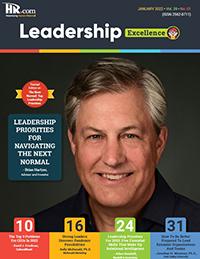




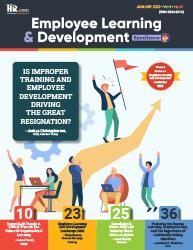




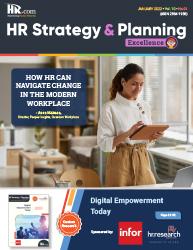


Like to submit an article? Use our online submission form or for more information go to www.hr.com/ExcellencePublications Publications 13 Targeted Publications to Reach Your Audience Informing, Educating, Enlightening and Assisting HR professionals in their personal and professional development, the Excellence series offers high-quality content through the publications!


For more information: Phone: 1.877.472.6648 | Email: ePubeditors@hr.com | www.HR.com/epubs HCM Excellence (APAC & Middle East) May 2023
































 Dave Ulrich
Rensis Likert Professor, Ross School of Business, University of Michigan Partner, The RBL Group
Julie Winkle Giulioni Author, Virtual /Live Keynote Presenter, Inc.’s Top 100 Leadership Speakers
Dr. Beverly Kaye CEO, BevKaye&Co.
Dave Ulrich
Rensis Likert Professor, Ross School of Business, University of Michigan Partner, The RBL Group
Julie Winkle Giulioni Author, Virtual /Live Keynote Presenter, Inc.’s Top 100 Leadership Speakers
Dr. Beverly Kaye CEO, BevKaye&Co.



















 By Amit D. Mishra, iMocha
By Amit D. Mishra, iMocha




 By Arun Kabra, TimesPro
By Arun Kabra, TimesPro


















